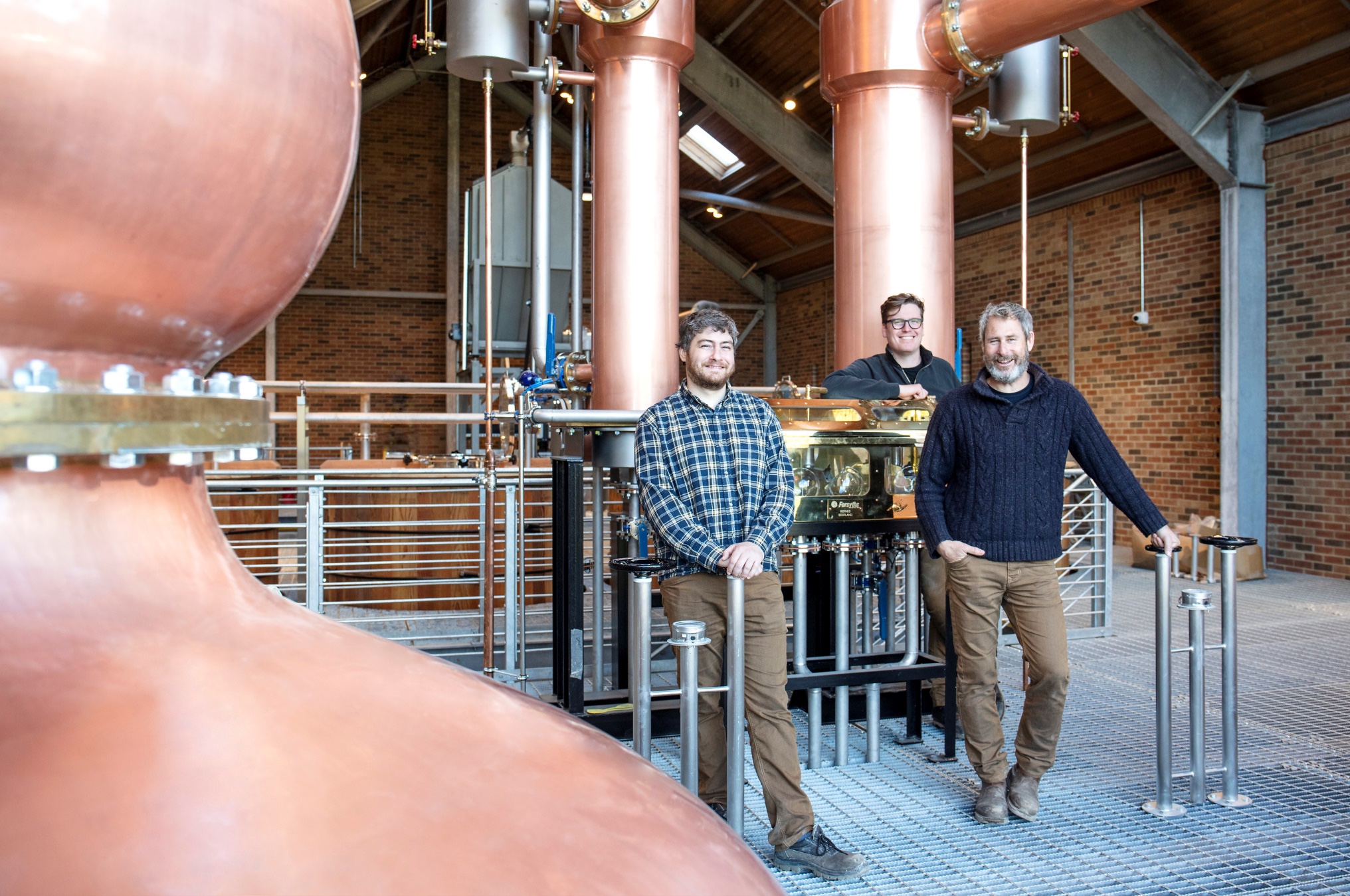England’s Northernmost Distillery Release its Inaugural Whisky Blend

Ad Gefrin, a ground-breaking Anglo-Saxon Museum and Distillery located in Wooler, Northumberland, is excited to announce the launch of its inaugural whisky blend. Ahead of Ad Gefrin opening next year, the release of Tácnbora in November aptly reflects a brand built on ancient hospitality and bringing everyone together; combining Scottish and Irish whiskies made for enjoying with others.
Opening in February 2023, Ad Gefrin will comprise a £14m world-class visitor experience revealing the fascinating history of Northumberland’s Anglo-Saxon ‘Golden Age’. The immersive museum will showcase the court of the 7th Century Northumbrian kings and queens that drew people from all over the world to visit their summer palace nearby. One of the most exciting facets of Ad Gefrin is the complete integration of museum experience and whisky distillery – the county’s first (legal) distillery in 200 years.
Tácnbora – meaning ‘Standard Bearer’ in Old English – is a fitting name for the spirit that comes before all the others. The Venerable Bede records that King Edwin was always preceded by a standard bearer carrying a standard with a goat’s head effigy, and that goat symbol is now central to Ad Gefrin’s brand marque. The whisky blend will pave the way for the distillery’s Ad Gefrin Single Malt in years to come.
The Tácnbora whisky blend features Scottish and Irish whiskies, reflecting two of the peoples that would have made up the Anglo-Saxons of Northumbria (Scottish, Irish, English and Scandinavian). Future editions will reflect different pairings. As for all four nationalities, Ad Gefrin are saving the option of bringing all four together for its exclusive blend for their Corenkyn (meaning ‘Chosen Family’ in Old English) founding members. Tácnbora has a strong Northumbrian provenance; the intertwining of the past and present, cultures and landscape, to bring people together to share. Tácnbora is made with a mix of malt and grain whiskies and aged in virgin American oak and Oloroso sherry casks, creating a distinctive and palatable spirit. On the nose, it has notes of honey, vanilla, candied citrus peel and spices, backed up on the palate with the flavours of sultanas, cream soda and nutmeg. The finish lingers and coats the mouth with the tastes of honey, vanilla and sweet citrus.
The Distillery team brings youth, passion and energy together under the leadership of rising star Ben Murphy, Director of Distilling. Ben has enjoyed successful stints as Head Distiller at Berentsens Brygghus, Egersund, Norway; and at Poetic License Distillery in Sunderland. He is passionate about traditional methodologies but not afraid to innovate. Joining him is Craig Stock – a Canadian with diverse experience latterly at Durham Distillery; and recent postgraduate from Heriot Watt University’s Institute of Brewing and Distilling, Germano Molinari of Sambucca heritage. Whilst this is an exciting young team, Ad Gefrin enjoys an enviable level of knowledge and wisdom being invested in its whisky with non-executive whisky royalty on board through Alan Rutherford, former President of the Malt Distillers Association of Scotland, and Council Member of the Scotch Whisky Association and recipient of an OBE for his ‘services to whisky’.
Tácnbora will be available to purchase online from November 1st for £42.50/70cl.






